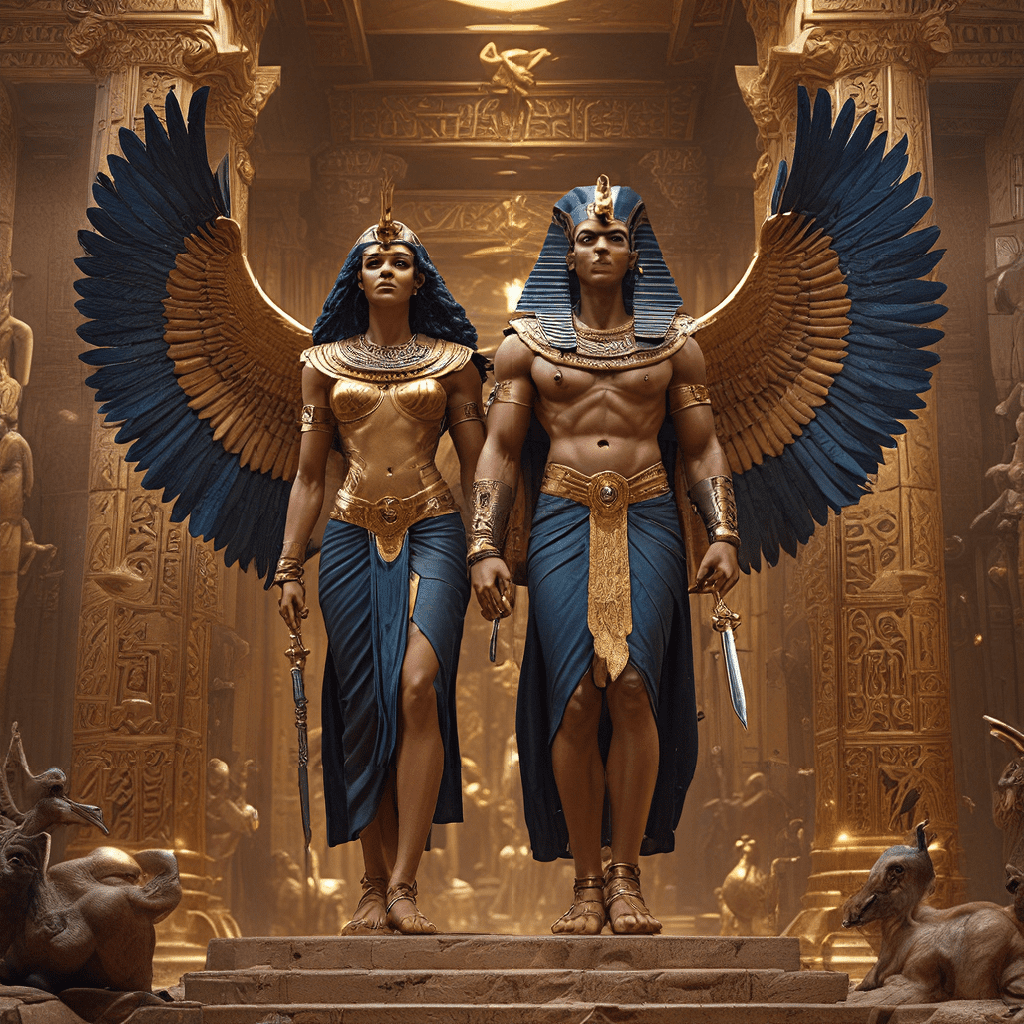The Gods of Justice and Retribution: Examining the Egyptian Concept of Divine Judgment
1. Introduction: The Importance of Justice in Ancient Egypt
Ancient Egypt was a civilization deeply rooted in order and righteousness. The concept of “Ma’at,” meaning truth, justice, and cosmic balance, permeated every aspect of Egyptian life. This principle governed everything from societal laws to the natural world. The Egyptians believed that maintaining “Ma’at” was critical for the well-being of both the living and the dead. Divine judgment was seen as a fundamental pillar of their religious beliefs, ensuring that cosmic order and justice were upheld.
2. The Role of the Gods in Maintaining Cosmic Order
The Egyptian pantheon was vast, with each deity representing a specific aspect of life, nature, or cosmic force. Many gods played a crucial role in maintaining “Ma’at” and ensuring justice. For instance, the god Horus embodied kingship and the protection of the pharaoh, while Thoth, the god of wisdom and learning, was associated with justice and truth. However, the most important god in this context was Osiris, the god of the underworld and resurrection.
3. The Weighing of the Heart Ceremony: A Detailed Examination
The “Weighing of the Heart” ceremony was the central event of the Egyptian afterlife judgment. It took place in the Hall of Two Truths, where the deceased soul was judged by Osiris. The heart, symbolizing the soul, was weighed on a delicate scale against the feather of Ma’at, representing truth and balance. Anubis, the jackal-headed god of mummification and the afterlife, oversaw the ceremony. Thoth, the scribe of the gods, recorded the verdict. If the heart balanced with the feather, the soul was deemed pure and worthy of entering the Field of Reeds, a paradise filled with joy and abundance. But if the heart was found heavier, it would be devoured by Ammit, a terrifying monster representing destruction and chaos.
4. The Judgment of Osiris: The Divine Judge
Osiris, the god of the underworld, played a critical role in the afterlife. Known for his association with resurrection, justice, and fertility, he was seen as the judge of the dead. His judgment was based on the deceased’s actions and their adherence to “Ma’at” during their lifetime. The “Weighing of the Heart” ceremony was the culmination of a process that began with the mummification of the body and the preservation of the soul for the afterlife.
5. The Negative Confession: A Guide to Ethical Living
The “Negative Confession” was a crucial part of the “Weighing of the Heart” ceremony. It was a list of 42 declarations of innocence, which the deceased soul recited before Osiris. These declarations covered a range of sins and virtues, reflecting the ethical code of ancient Egypt. By reciting the “Negative Confession,” the deceased soul affirmed their adherence to “Ma’at” and sought to prove their worthiness for the afterlife. The confession was a powerful testament to the importance of ethical living and its consequences in the afterlife.
6. The Consequences of Judgment: Rewards and Punishments
The outcome of the judgment in the afterlife had significant consequences. Those deemed righteous and pure were granted eternal life in the Field of Reeds, a paradise filled with abundance and joy. It was a promised land where the righteous could live in peace and happiness forever. On the other hand, those found guilty faced the judgment of Ammit, a terrifying monster representing destruction and chaos. Ammit devoured their hearts, condemning them to a fate of oblivion or eternal torment in the underworld. This stark contrast between reward and punishment underscored the importance of living a moral life in ancient Egypt.
7. The Significance of Justice and Retribution in Egyptian Belief
The Egyptian concept of divine judgment served as a powerful tool for maintaining social order and reinforcing ethical behaviour. It instilled a deep sense of responsibility and accountability among individuals, encouraging them to live in accordance with “Ma’at.” The belief in divine judgment also provided comfort and hope for the deceased, offering a prospect of eternal life and happiness in the afterlife. The “Weighing of the Heart” ceremony and the “Negative Confession” were not merely religious rituals but served as powerful reminders of the consequences of one’s actions in both life and death.
8. Artistic and Literary Representations of the Afterlife and Judgment
The Egyptian concept of the afterlife and judgment was vividly depicted in various forms of art and literature. Tomb paintings, hieroglyphic texts, and funerary objects provide rich insights into the beliefs and rituals associated with death and judgment. The “Book of the Dead,” a collection of spells and hymns, described the journey of the soul through the afterlife and the challenges it faced. These depictions served as visual and literary guides for the living and the deceased, illustrating the importance of justice, morality, and the consequences of one’s actions in the afterlife.




